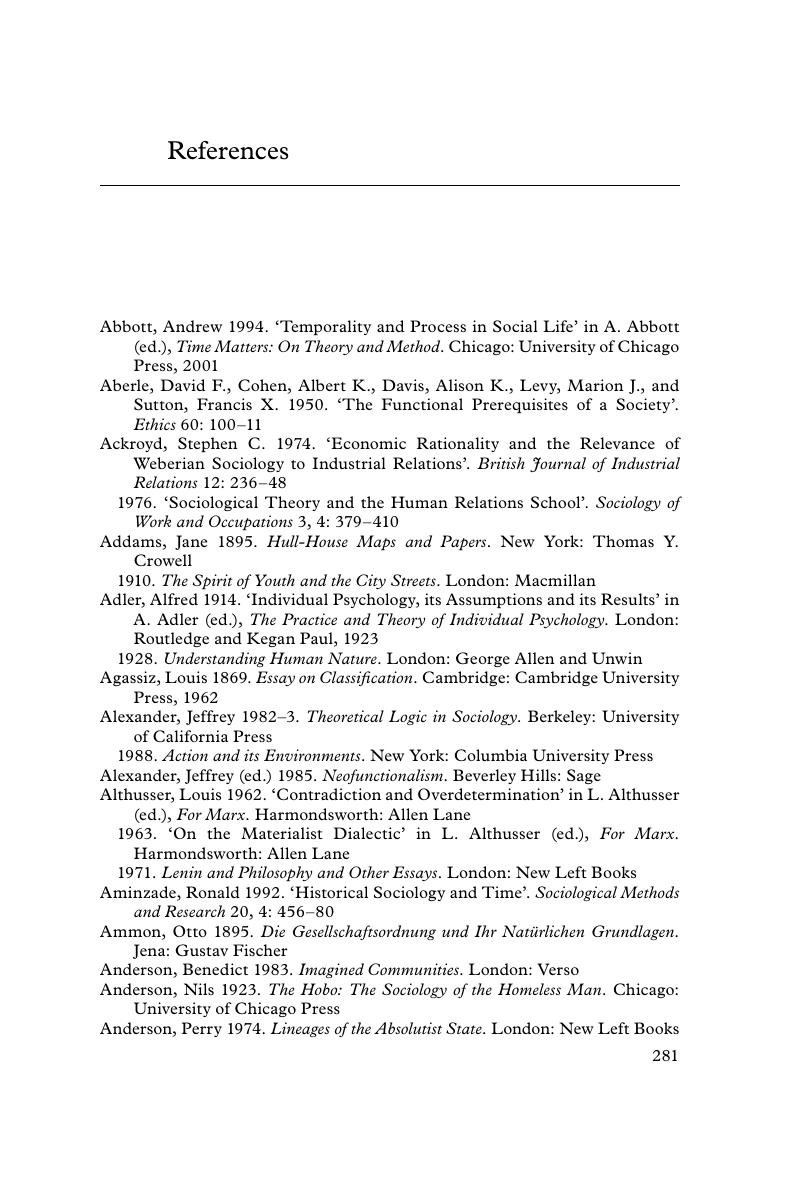Book contents
- Frontmatter
- Contents
- Figures
- 1 Diversity and Continuity in Social Theory
- 2 Culture: the Socialisation of Meaning
- 3 Nature: Conditions and Constraints
- 4 Systemic Processes: Regulation and Control
- 5 Space-Time: Forms and Practices
- 6 Social Structure: Institutions and Relations
- 7 Social Action: Interpersonal and Collective
- 8 Subjects: Socialised Minds
- 9 Social Development: Differentiation and Change
- 10 Conclusion
- Notes
- References
- Index
- References
References
Published online by Cambridge University Press: 05 June 2012
- Frontmatter
- Contents
- Figures
- 1 Diversity and Continuity in Social Theory
- 2 Culture: the Socialisation of Meaning
- 3 Nature: Conditions and Constraints
- 4 Systemic Processes: Regulation and Control
- 5 Space-Time: Forms and Practices
- 6 Social Structure: Institutions and Relations
- 7 Social Action: Interpersonal and Collective
- 8 Subjects: Socialised Minds
- 9 Social Development: Differentiation and Change
- 10 Conclusion
- Notes
- References
- Index
- References
Summary

- Type
- Chapter
- Information
- Conceptualising the Social WorldPrinciples of Sociological Analysis, pp. 281 - 324Publisher: Cambridge University PressPrint publication year: 2011

